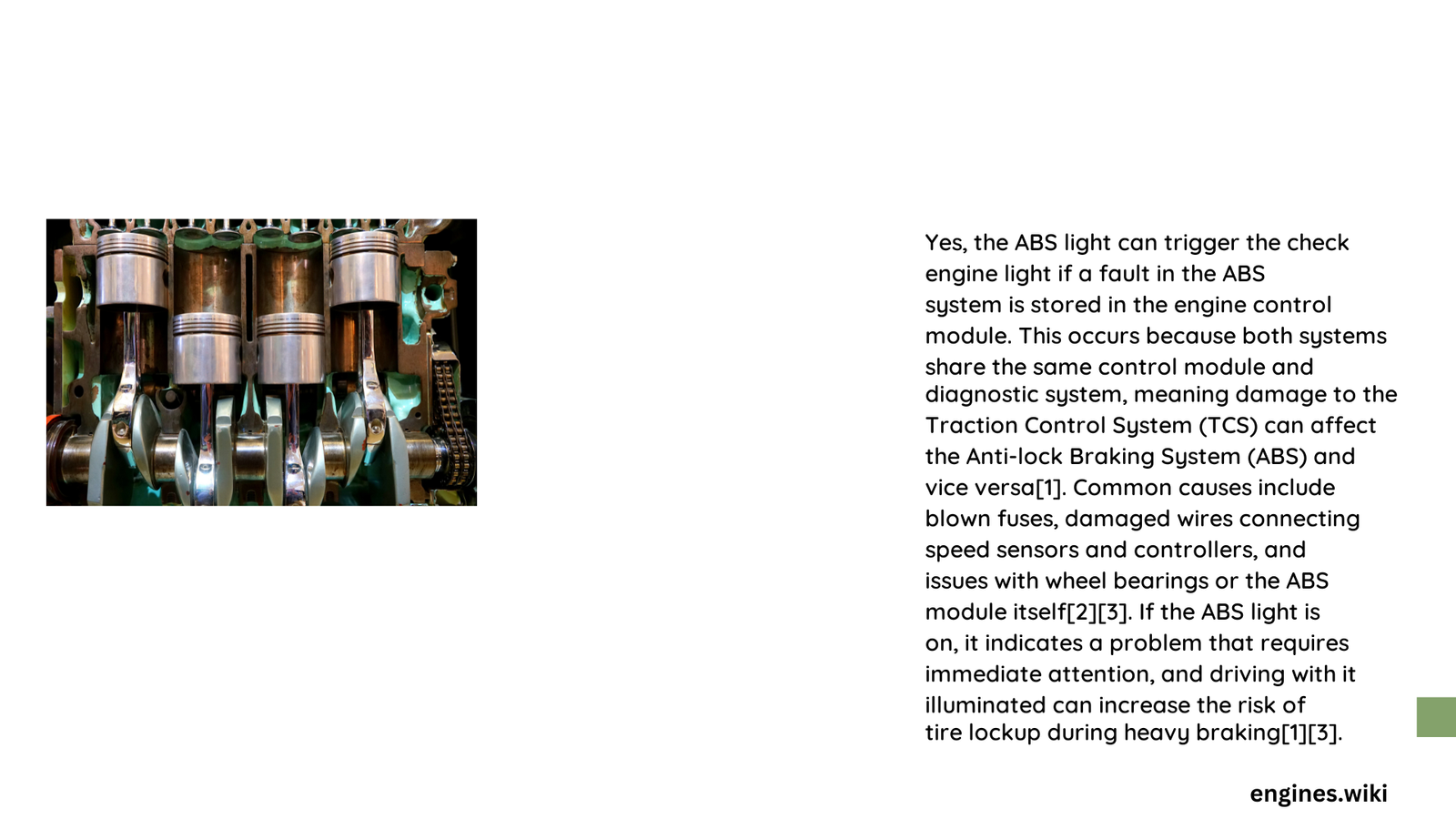Modern vehicles have complex interconnected electronic systems where a malfunction in one component can potentially trigger warning indicators in another. The ABS (Anti-lock Braking System) can indeed activate the check engine light under specific circumstances, primarily due to shared diagnostic networks, sensor complications, and integrated vehicle control modules. Understanding these intricate relationships is crucial for accurate vehicle troubleshooting and maintenance.
What Causes ABS to Trigger Check Engine Light?
Can Shared Vehicle Systems Activate Multiple Warning Lights?
Vehicle electronic systems are intricately designed with multiple interconnected control modules. The ABS and engine management systems often communicate through a shared diagnostic network, which means problems in one system can potentially influence another.
Key Interaction Points Between ABS and Engine Systems
| System Component | Potential Interaction | Possible Warning Light |
|---|---|---|
| Wheel Speed Sensors | Sends data to multiple modules | ABS & Check Engine |
| Traction Control System | Shares diagnostic network | ABS & Check Engine |
| Brake Fluid Pressure Sensors | Monitors system integrity | ABS & Check Engine |
What Specific ABS-Related Issues Might Trigger Check Engine Light?
Several precise scenarios can cause the check engine light to illuminate through ABS-related complications:
- Faulty Wheel Speed Sensors
- Sends incorrect rotation data
- Disrupts communication between vehicle control modules
-
Generates inconsistent diagnostic codes
-
Traction Control System Malfunctions
- Shares control modules with ABS
- Can generate cross-system diagnostic trouble codes
-
Potentially interrupts engine power management
-
Wiring and Electrical Connectivity Problems
- Damaged ABS sensor wiring
- Corrosion in electrical connections
- Intermittent signal transmission
How to Diagnose ABS-Related Check Engine Light?
Proper diagnostic procedures are essential for identifying the root cause:
- Use Advanced OBD-II Scanner
- Read specific ABS and engine diagnostic codes
- Identify precise system malfunction
-
Determine whether issue originates in ABS or engine system
-
Physical Inspection Checklist
- Check brake fluid levels
- Examine wheel speed sensor conditions
- Inspect ABS module and wiring harness
- Verify tire pressure and wheel bearing integrity
What Professional Mechanics Recommend
Experienced automotive technicians suggest the following approach:
- Never ignore multiple warning lights
- Use professional-grade diagnostic tools
- Perform comprehensive system scan
- Address underlying issues promptly
- Maintain regular vehicle maintenance schedule
Critical Considerations for Vehicle Owners

While ABS can trigger the check engine light, it’s not a guaranteed occurrence. Each vehicle model has unique characteristics, and diagnostic procedures may vary. Professional assessment remains the most reliable method for accurate diagnosis.
When to Seek Professional Help?
- Persistent warning lights
- Unusual vehicle behavior
- Complex diagnostic codes
- Potential safety-related issues
Technical Insights
Modern vehicles utilize sophisticated electronic stability control systems where multiple sensors continuously communicate. The ABS system’s intricate design means that a minor sensor deviation can potentially generate cross-system diagnostic codes.
Preventive Maintenance Tips
- Regular sensor cleaning
- Annual comprehensive vehicle diagnostic check
- Timely replacement of worn components
- Use high-quality brake system fluids
Conclusion
Understanding the potential interactions between ABS and engine management systems empowers vehicle owners to make informed maintenance decisions. While check engine light activation through ABS is possible, it requires careful diagnostic approach and professional evaluation.
